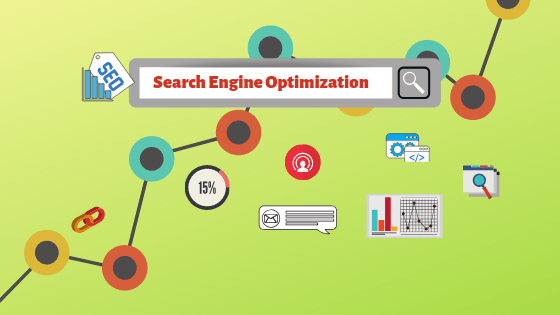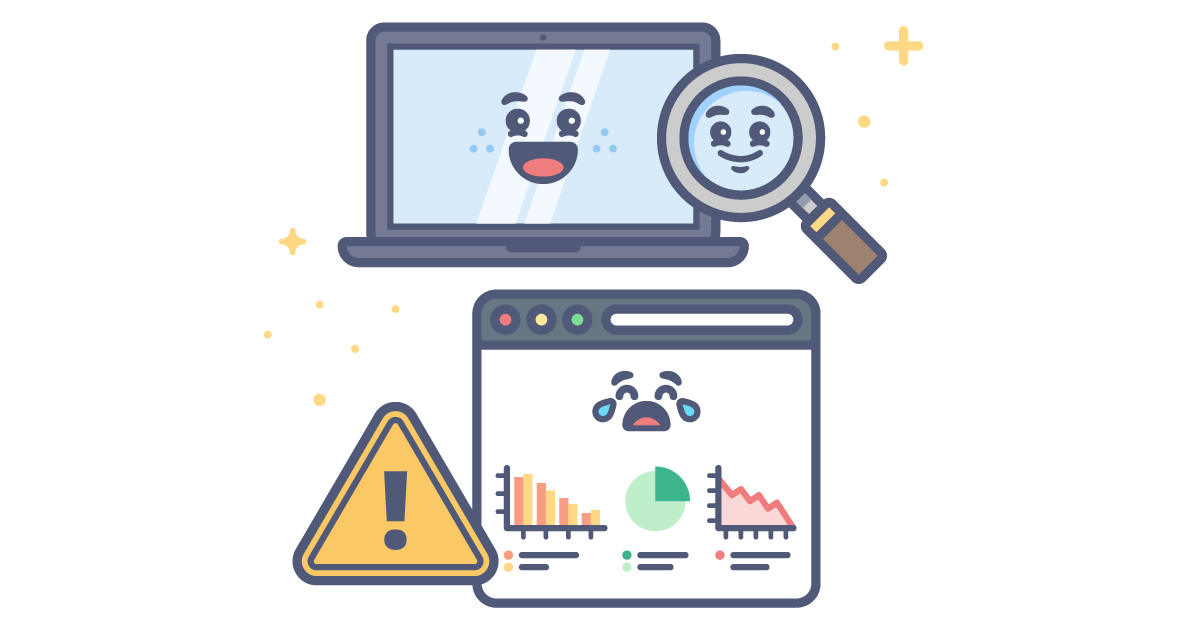So, you want more traffic without paying Google every time someone clicks? You’re in the right place. A well-structured search engine optimization campaign can bring in consistent, organic search traffic—and no, it’s not just for tech wizards.
SEO is just one part of digital marketing, but it’s the part that brings long-term, organic growth without paid ads.
According to BrightEdge (2024), 53% of all website traffic comes from organic search, beating paid ads and social combined. Unlike Google Ads, which stop working when your budget runs out, SEO keeps delivering traffic over time.
In this guide, you’ll learn how to build, launch, and improve an SEO campaign that actually works. We’ll skip the fluff, speak your language, and walk you through it all—step by step. Ready to stop guessing and start ranking? Let’s go.
What Is a Search Engine Optimization Campaign?

A search engine optimization campaign is a step-by-step plan to improve your website’s organic search results on search engines like Google and enhance your website's search engine rankings.
SEO campaigns are typically short-term and have specific goals, while strategies are long-term and encompass various tactics.
A comprehensive SEO campaign includes technical SEO audits, content development aligned with user intent, and ethical link acquisition.
It helps boost your website traffic, improve your website’s search engine rankings, and online visibility over time—without paying for ads.
Understanding How Search Engines Work (and What They Prioritize)
When you type something into Google, the search engine quickly scans billions of web pages to find the best answers. But how does it decide what shows up first?
Search engines like Google use automated bots (called crawlers) to scan, index, and rank content across the internet. Then, they use smart algorithms to show the most helpful results based on what the user wants—this is called search intent.
Using tools like Google Search Console and Google Analytics, you can track your SEO campaign and improve your rankings.
If you’re serious about growing your organic traffic, you need a proper search engine optimization campaign—not random guessing.
What Makes a Successful SEO Campaign?

A successful search engine optimization campaign doesn’t just mean showing up on Google. It means showing up for your target audience, with the right content, at the right time.
A well-planned link building strategy is also essential for improving your website's authority and rankings as part of a comprehensive SEO campaign. Email outreach can effectively generate backlinks from authority sites.
Relying only on paid search can be expensive—SEO gives you compounding returns over time. Every strong SEO campaign is built on smart planning, not guesswork.
How to Create a Search Engine Optimization Campaign
Creating a search engine optimization campaign means planning how to get your site to show up higher in search engine results like Google. If your site doesn’t show up, people can’t find you. Simple, right?
1. Start with One Clear Goal
Before you dive into keyword research or update your web pages, ask: What am I trying to achieve?
Your goal could be:
- Getting more organic traffic
- Boosting website traffic for a product page
- Ranking higher for a target keyword
- Growing your email list using blog posts
- Improving your local visibility with local SEO
Why It’s Important:
- Without a clear goal, your SEO strategy will feel like a guessing game. You’ll waste time fixing things that don’t matter and miss chances to actually grow.
- Google uses over 200 factors to decide search rankings, and you can't fix them all at once. Starting with a clear goal helps you focus.
How to Do It:
- Choose one metric to measure: traffic, clicks, or leads.
- Use Google Analytics and Google Search Console to check where you are now.
- Make your goal simple. For example: “Get 500 visits a month to my blog on DIY lighting.”
2. Know Your Audience Search Intent
Search intent is what someone really wants when they type something into search engines like Google, especially with the rise of voice search . Are they looking to buy, learn, or compare?
Let’s say someone types “best SEO tools for beginners.” They’re likely doing research. But someone searching “buy SEO software” is ready to make a purchase.
Why It’s Important:
- If your content doesn’t match the user intent, you won’t show up in the search results—even if you use the right keywords.
- Google has gotten smart. It checks if your content actually helps people, not just if it’s stuffed with keywords.
How to Do It:
- Use tools like Google Keyword Planner to find real keyword ideas. Focus on identifying valuable keywords that are highly relevant and targeted to user search queries, as these are more likely to match user intent and drive qualified traffic.
- Look at the search engine results pages (SERPs) to see what type of content ranks for that keyword.
- Match your page to what users want—use helpful meta descriptions, headings, and clear answers.
- Answer questions. Add examples. Break big ideas into small steps.
3. Audit Your Current Site First
A website audit is like a health checkup for your site. Regular SEO audits help identify technical issues and inform your ongoing SEO strategy. It shows what’s working and what’s broken. This step is where you fix all the small things that confuse search engines—and yes, they get confused!
Why It’s Important:
- If your website has broken links, slow loading speeds, or messy code, Google won’t trust it. That means your pages won’t show up in the top search results, even if your content is great.
- Search engines like Google favor websites that load quickly, are optimized for mobile devices, and are easy for crawlers to navigate.
- These are all part of what we call technical SEO and on page SEO.
How to Implement:
- Use tools like Google Search Console, Google Analytics, or a free SEO audit tool to scan your website.
- Look for issues like:
- Slow page speed
- Missing meta descriptions
- Duplicate content
- Pages with no internal linking
- Mobile usability errors
- Fix what you can immediately. For bigger issues, ask a developer or use SEO tools like Screaming Frog or Semrush. Internal linking helps Google find and index all pages, which assists in ranking.
4. Build a Keyword Strategy
A keyword strategy is your plan to choose the right words people search in Google. Think of it like building a roadmap. Without it, your content gets lost. Keyword research is foundational to SEO and will almost always be a part of an SEO campaign.
Why It’s Important:
- You might write amazing content—but if it doesn’t include the words your audience types into search engines, no one will find it. Keywords help search engines understand your content and match it with the right search queries.
- Plus, using long tail keywords (like “best SEO tools for small businesses”) helps you rank faster and attract more targeted organic traffic.
How to Implement:
- Utilize free resources like Google Keyword Planner, Ubersuggest, or AnswerThePublic to discover keywords that people are actively searching for.
- Pick a mix of:
- High-volume keywords
- Low-competition long tail keywords
- Medium-tail keywords with low competition and higher search volume
- Questions (great for blog posts)
- Organize them by topic, search intent, and difficulty.
- Instead of targeting just one phrase, build topic clusters using more keywords related to your main target.
- Plan to include these in:
- Page titles and URLs
- Headings (H1, H2)
- First 100 words of your content
- Meta descriptions and image alt text
Low competition keywords are especially important if a site is just starting out in SEO.
5. Create Content That Answers Questions
This means writing pages or blog posts that directly solve your audience’s problems. Think of it like this: every Google search is a question. Your content should be the answer.
Why It’s Important:
- Search engines like Google prefer content that satisfies user intent. If your page clearly helps someone, it’s more likely to appear higher in the search results. Plus, helpful content builds trust—and trust turns into clicks, traffic, and even sales.
- Searchers also love how-to guides, checklists, and FAQs. These formats are easy to skim and often show up in featured snippets or organic search results.
How to Implement:
- Use your keyword research to find common questions.
- Create content in different formats: how-tos, comparisons, product explainers, etc.
- Use long tail keywords like “best SEO tools for small business” to attract focused traffic.
- Organize your ideas using bullet points and clear headings.
- Keep your writing simple and direct.
- Add internal links to related web pages.
- Don’t forget to include your target keyword and use it naturally. Using synonyms of the main keyword also helps give search engines a deeper understanding of the content.
6. Optimize On-Page Elements
On page SEO, which includes on page optimization, is about improving the things you can control on your own site—titles, headers, images, and text. This helps search engines scan and rank your page more easily.
Why It’s Important:
- No matter how good your content is, poor formatting and missing elements can hold it back. Google looks at meta descriptions, page speed, mobile layout (mobile SEO), and even your URLs. These all affect your search engine rankings and website visibility.
- Getting these basics right boosts both your SEO performance and user experience.
How to Implement:
- Start your title with your target keyword or a valuable keyword.
- Write a clear meta description (under 160 characters) that encourages clicks.
- Use headers (H1, H2, H3) to break up content and include keywords when natural.
- Make your web pages mobile-friendly. Use responsive design and readable fonts.
- Add alt text to your images using relevant keywords.
- Use SEO tools or plugins like Yoast, Rank Math, or Semrush to check for issues.
Structured data helps both users and search engines better understand what your page is about.
7. Get External Links (Off-Page SEO)
Off-page SEO, which includes link building, is everything you do outside your own website to help it rank better. The biggest part of this is getting backlinks—other websites linking to yours. Think of a backlink as a vote of confidence from another site.
Why It’s Important:
- Google looks at link building as a trust signal. If high-authority sites link to your content, search engines see you as reliable. It’s a major factor in improving your search engine rankings and increasing organic search traffic.
- According to Backlinko (2024), the top result on Google has 3.8x more backlinks than results in positions 2–10.
How to Implement:
- Write high-quality blog posts or guides that people want to share.
- Reach out to relevant blogs or industry sites and ask them to link to your content.
- Submit your site to trusted directories (especially for local SEO).
- Use guest posting on other blogs as a way to earn backlinks.
- Avoid spammy link farms. Quality is more important than quantity. Reverse engineering competitor's links can help in obtaining backlinks.
This off-page work gives your SEO campaign more power to compete in tough search results.
8. Track and Improve Using SEO Tool
You can’t improve what you don’t measure. Using SEO tools helps you track what’s working, what’s not, and where you can grow.
Why It’s Important: Your SEO efforts are long-term and essential for generating organic traffic . You need data to stay on track. Tools like Google Search Console, Google Analytics, and other best SEO tools show your website traffic, keyword progress, and organic search performance.
Tracking your work helps you:
- Fix errors (like broken links or crawl issues)
- Understand what content gets clicks
- See where you’re gaining or losing keyword rankings
How to Implement:
- Set up Google Analytics and Google Search Console if you haven’t already.
- Use tools like Ahrefs, Semrush, or Ubersuggest for deep keyword insights.
- Track your target keywords and watch your page SEO scores.
- Review meta descriptions, click-through rates, and search engine results pages performance.
- Run a full SEO audit once a month.
- Use structured data and check your technical SEO issues with crawlers like Screaming Frog. Tracking content performance helps optimize future content strategies.
How to Launch a Search Engine Optimization Campaign

1. Define What Success Looks Like First
You need to decide what your SEO campaign is aiming for. What are you trying to achieve? Is it more website traffic? Higher keyword rankings? More clicks to your landing page? Key performance indicators (KPIs) should be established at the beginning of an SEO campaign to measure success.
Why It’s Important:
- If you don’t know what success means, it’s easy to waste time on the wrong things. Your team won’t know what to focus on, and your campaign will feel scattered.
- Defining success gives your SEO strategy a clear direction. It helps you measure progress using real data from tools like Google Analytics and Google Search Console.
How to Implement:
- Pick 1–2 goals based on your business needs. Example: “Rank in the top 5 for my target keyword” or “Increase organic search traffic by 25% in 3 months.”
- Track your goals using SEO tools. Tools like Ahrefs, Semrush, or Google Search Console help monitor performance.
- Create a simple dashboard to measure SEO performance weekly.
2. Focus on Long Tail keywords
Long tail keywords are longer, more specific phrases like “best SEO tools for food blogs.” They may get fewer searches but are easier to rank for and attract people with clear search intent.
Why It’s Important:
- New or smaller websites may struggle to rank for high search volume keywords. But long tail terms often lead to more conversions because they match exactly what a person is looking for.
- They also help search engines better understand your website's content, which improves your search engine optimization results faster.
How to Implement:
- Use tools like Google Keyword Planner, Ubersuggest, or Semrush to find keywords.
- Pick long tail phrases that:
- Match what your audience is really searching for
- Include your target keyword naturally
- Relate to your blog posts, product pages, or FAQs
- Use them in:
- Headings (H2, H3)
- URL slugs
- Meta descriptions
- First paragraph of the page
3. Create a Content Plan That Aligns With Search Intent
You should plan what content to create based on what people are searching for. This is called search intent—the reason behind a search.
Are they asking questions? Comparing products? Looking to buy? Optimizing your website content to align with user intent and keyword strategies is essential for SEO success.
Why It’s Important:
- If your content doesn’t match what users want, it won’t rank. Even if you include the right target keywords, it may not work unless it answers the actual query. Matching search intent improves your organic search results and boosts website traffic.
- Search engines now focus on helpfulness. If your content delivers what users expect, you’re more likely to show up in search engine results.
How to Implement:
- Start with strong keyword research using tools like Google Keyword Planner or Semrush.
- Group keywords by type of intent:
- Informational (e.g., “how SEO tools work”)
- Navigational (e.g., “Google Search Console login”)
- Transactional (e.g., “buy SEO software”)
- Match content formats with intent:
- Blog posts for informational
- Product pages for transactional
- Comparison pages for commercial investigation
- Use headings and visuals to guide readers.
- Optimize for page SEO and include meta descriptions that speak directly to user needs.
Regularly reviewing and improving your website's content is crucial to boost organic traffic and user engagement.
Content marketing plays a key role in your SEO campaign—it helps attract, educate, and convert your audience through useful, search-friendly content
4. Use Google Analytics from Day One
Google Analytics is a free tool that tracks who visits your site, how they found it, and what they do there. Starting it early gives you a clear view of your campaign’s impact.
Why It’s Important:
- Without data, you're guessing. Google Analytics helps you measure real progress in your SEO strategy—like how much organic traffic you get, which blog posts perform best, or where people drop off.
- It also works well with Google Search Console to show how you appear in search results.
How to Implement:
- Sign up and install the tracking code on your website.
- Set up basic goals like:
- Time on site
- Clicks on buttons
- Scroll depth
- Use the data to spot what’s working and fix what’s not.
- Monitor bounce rate, session duration, and new vs. returning users.
- Cross-check keyword data with your SEO tools and update your keyword strategy.
5. Don’t Skip Local SEO (If It Matters)
Local SEO helps your business show up when people nearby search for your services. It’s great for small businesses, stores, clinics, or restaurants.
Why It’s Important:
- According to Google, 46% of all searches have local intent. If someone types “best dentist near me,” and your Google Business Profile isn’t optimized, you’re losing customers.
- Local optimization helps you rank higher in search engine results pages, maps, and voice queries like “find a bakery nearby.” It's crucial for getting more website traffic and foot traffic.
How to Implement:
- Create or update your Google Business Profile
- Use your target keyword + location (e.g., “plumber in Austin”)
- Add consistent Name, Address, and Phone (NAP) across web pages
- Collect real reviews from happy customers
- Implement structured data (such as LocalBusiness schema) to help search engines better interpret your site
Example: One pizza shop added their updated hours and menu to Google Business. Within 3 weeks, they saw a 28% jump in organic search traffic from mobile users.
6. Set Up Tracking Before You Launch
Before your campaign starts, connect your site to tracking tools like Google Analytics and Google Search Console. This helps you understand what’s working and what’s not.
Why It’s Important: Without data, your SEO strategy is just guessing. Tracking helps you see what search engines see and how visitors behave once they land on your landing page or blog posts.
You’ll be able to:
- See your keyword rankings
- Track organic traffic and bounce rates
- Monitor technical SEO issues
- Check how your pages appear in search results
How to Implement:
- Add Google Analytics to your website with a tracking code
- Connect your site to Google Search Console
- Set goals: clicks, time on site, leads
- Run regular reports to monitor your seo performance
- Fix issues like broken links, crawl errors, or low click-through rates
- Align your results with your original seo campaign goals
Pro Tip: Make a habit of reviewing your dashboard weekly. It helps you make quick, smart decisions and keeps your search engine optimization campaign on track.
Advanced SEO Campaign Strategies
1. Leveraging Schema Markup and Structured Data
Schema markup and structured data are like secret codes that help search engines understand your website’s content on a deeper level.
By adding structured data to your web pages, you give search engines extra context—making it easier for them to figure out what your site is about and when to show it in search engine results.
How to Implement:
- Identify which schema types fit your site—common ones include LocalBusiness, Product, Event, and Review.
- Use tools like Google’s Structured Data Markup Helper to add schema to your pages.
- Test your markup with Google’s Rich Results Test to make sure search engines can read it.
- Monitor your results in Google Search Console and Google Analytics to see if your enhanced listings are driving more clicks and impressions.
2. Mobile-First and Core Web Vitals Optimization
With more people searching on mobile devices than ever before, mobile-first optimization is no longer optional—it’s essential for any successful SEO campaign.
Google’s algorithm now prioritizes mobile-friendly websites, so if your site isn’t optimized for mobile, you’re missing out on higher search engine rankings and valuable organic traffic.
How to Implement:
- Use responsive design so your site looks great on any device.
- Compress images and minify code to speed up load times.
- Test your site with Google’s PageSpeed Insights to check your Core Web Vitals and get actionable tips.
- Fix issues like slow loading, layout shifts, or delayed interactivity—these can hurt both user experience and your rankings.
3. International and Multilingual SEO Strategies
If your business serves customers in different countries or speaks to audiences in multiple languages, international and multilingual SEO strategies are crucial for expanding your reach in search engine results.
How to Implement:
- Add hreflang tags to your web pages to tell search engines which language and region each page targets.
- Translate your content into the languages your audience speaks—don’t just rely on machine translation for important pages.
- Use geotargeting to focus your content on specific countries or regions.
- Monitor your international SEO performance with Google Search Console and Google Analytics to see which markets are driving traffic and where you can improve.
4. Voice Search and Emerging Trends
Voice search is changing the way people interact with search engines. With more users turning to voice assistants like Google Assistant, Siri, and Alexa, optimizing your SEO campaign for voice search is becoming a must for staying ahead in search engine optimization.
How to Implement:
- Use natural, conversational language in your content—think about how people ask questions out loud.
- Create FAQ pages and answer common questions directly to increase your chances of appearing in voice search results.
- Focus on long tail keywords and question-based phrases that match voice search queries.
- Stay updated on the latest SEO trends and Google algorithm updates to keep your engine optimization strategy current.
Avoiding Common SEO Campaign Mistakes

1. Skipping a Clear SEO Strategy
Jumping into SEO without a plan. Some just publish content and hope it ranks.
Why It’s a Problem:
Google uses over 200 ranking factors. Without a solid SEO strategy, your efforts may go in the wrong direction. You'll miss your target keywords, confuse search engines, and waste time.
How to Fix It
- Set goals: Do you want more website traffic or better search engine rankings?
- Choose metrics like bounce rate, conversions, or top web pages
- Align your content with real search intent
- Use tools like Google Search Console and Google Analytics to track and adjust
2. Focusing Only on Rankings, Not Search Results Quality
Obsessing over being “#1” but ignoring whether your listing gets clicks.
Why It’s a Problem:
Ranking #1 doesn’t help if your meta descriptions are bad or your page SEO is poor. Users won’t click, and Google sees that.
How to Fix It:
- Write clear meta descriptions that match the content
- Use structured data to enhance your listings
- Improve load speed and mobile experience (technical SEO matters)
- Answer real questions to match user intent
Example: A business improved their click-through rate by rewriting titles and descriptions. Traffic doubled—without moving up in rankings.
3. Neglecting Technical Optimization
Technical SEO means improving how your site works in the background. It includes site speed, mobile friendliness, crawlability, and more.
Why it matters:
Search engines like Google won’t rank your pages well if your site has broken links, slow load times, or isn’t mobile-friendly. In fact, Google uses page experience signals (like Core Web Vitals) to decide where your page shows up in search results.
How to fix it:
- Run a full technical SEO audit using tools like Google Search Console or Screaming Frog.
- Fix broken links, duplicate content, and missing structured data.
- Don’t ignore the technical aspects of SEO—clean code, crawlability, and structured data are foundational.
- Ensure your site is mobile-optimized and loads fast.
- Submit your sitemap through Google Search Console. Technical optimization is the process of completing activities on your site that are designed to improve SEO but are not related to content.
Tip: Prioritize technical optimization early. It lays the foundation for a successful SEO campaign. SEO success depends on consistency—regular audits, content updates, and smart keyword targeting
4. Writing Meta Descriptions as an Afterthought
Meta descriptions are the short blurbs you see under a page title in search engine results.
Why it matters:
Even though meta descriptions don’t directly affect rankings, they strongly impact click-through rate (CTR). A weak or missing meta description can hurt your traffic.
How to write better meta descriptions:
- Keep it under 160 characters.
- Use relevant keywords naturally.
- Make it useful and actionable (ex: “Learn how to improve your SEO in 5 steps”).
- Avoid duplicates—each page should have its own description.
Tip: Treat your meta descriptions like mini-ads for your page. If it’s boring, users won’t click.
5. Spreading SEO Efforts Too Thin
Trying to do too many things at once — without a clear priority — can lead to weak results. You may be posting blog posts, doing keyword research, running audits, and chasing backlinks all at once but not seeing impact.
Why it hurts:
You waste time and energy without moving the needle. Google won’t reward scattered efforts that don’t serve users or match search intent. Worse, key actions like improving on page SEO or updating old content may fall through the cracks.
How to fix it:
- Focus first on what moves traffic: optimize your top web pages, improve page SEO, and clean broken links.
- Set one or two SEO goals at a time — like boosting internal linking or building structured data for product pages.
- Remember, not just your homepage—every one of your website pages should be optimized for search engine.
- Track progress weekly in tools like Google Search Console and Google Analytics.
6. Ignoring Organic Search Trends
You continue to use the same keywords, meta descriptions, and strategies even when search engines — and users — have moved on, affecting your website's content .
Why it matters:
Organic search trends shift fast. Google’s algorithm updates, changing search queries, and new voice search habits can all affect rankings. Ignoring this means missing traffic and lower website visibility.
How to stay updated:
- Use Google Trends, keyword research tools, and SEO audit software regularly.
- Refresh your keyword strategy to include high search volume and long tail keywords.
- Study your organic search traffic for new patterns using tools like Google Analytics.
- Create fresh content that reflects current user intent and answers relevant search queries. Posting fresh, helpful content regularly also increases your chances of appearing in Google Discover
Final Note
A strong search engine optimization campaign isn’t just about ranking—it’s about reaching the right people, with the right content, at the right time. By setting clear goals, focusing on search intent, using the right SEO tools, and avoiding common mistakes, you set your website up for long-term organic growth. Start simple, stay consistent, and keep improving.

.jpg)
.jpg)
.jpg)
.jpg)
.jpg)
.jpg)
.jpg)
.jpg)
.jpg)
.jpg)
.jpg)
.jpg)
.jpg)
.jpg)
.jpg)
.jpg)
.jpg)
.jpg)
.jpg)
.jpg)
.jpg)
.jpg)
.jpg)
.jpg)
.jpg)

.png)
.png)
.png)
.png)
.png)
.png)
.jpg)
.jpg)
.svg)

